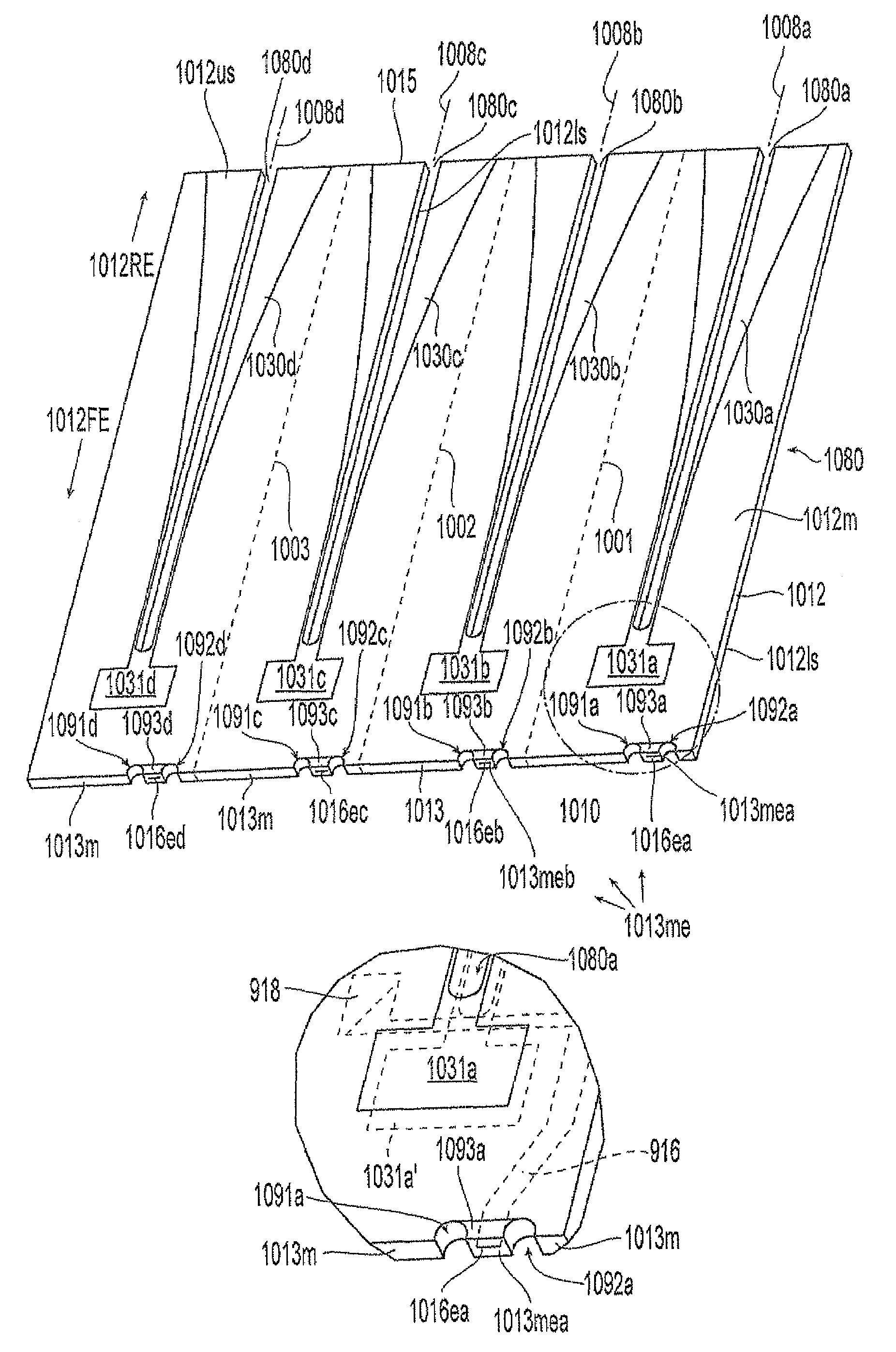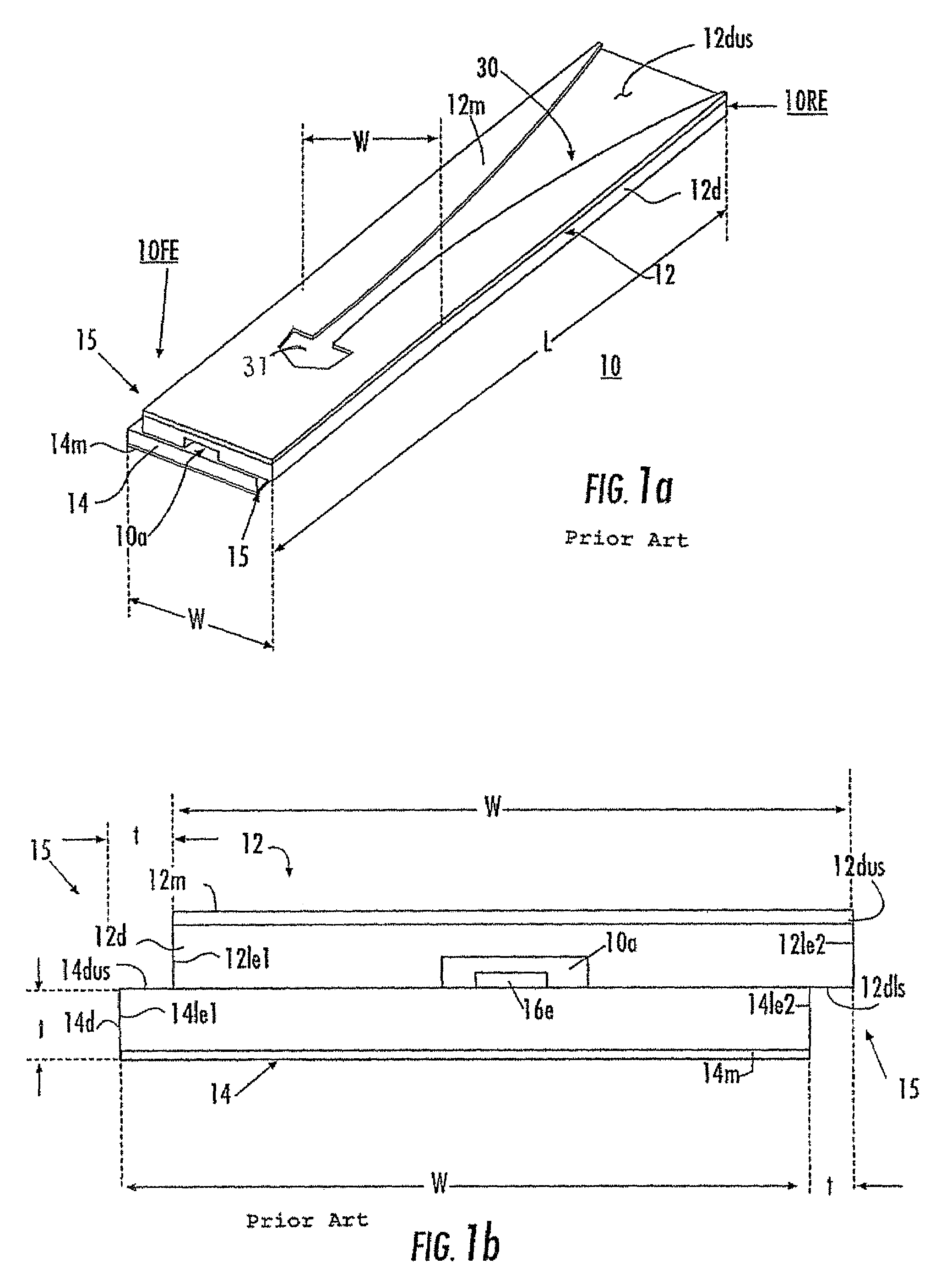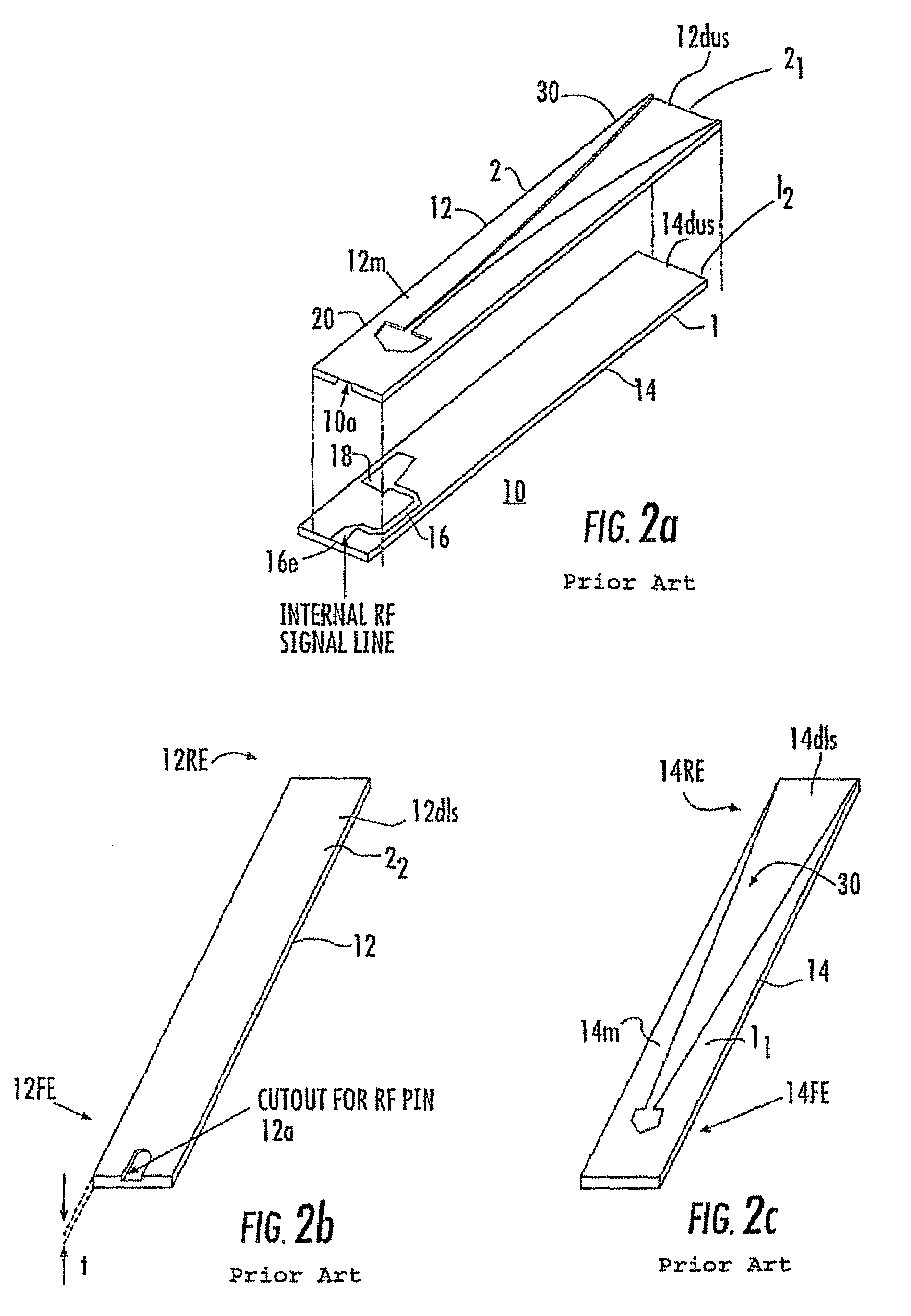Method for fabricating horn antenna
a technology of antenna array and antenna plate, which is applied in the field of antenna plate, can solve the problems of exacerbated problems associated with the fabrication of antenna plate array, and efficient radiator in the plane of the board
- Summary
- Abstract
- Description
- Claims
- Application Information
AI Technical Summary
Problems solved by technology
Method used
Image
Examples
Embodiment Construction
[0047]FIG. 9 illustrates a portion of juxtaposed, preferably joined, dielectric boards designated 912 and 914. The plane of the juxtaposition is designated 911. These boards are made generally by prior art methods. The illustrated portion of the structure 910 is near the feed end 910FE. The joined boards 912 and 914 together define a feed-end edge designated 913. The near or upper surface 912us of the joined boards 912, 914 is covered with a pattern of electrically conductive material 912m, which may be a metallization, defining a slot antenna 930 (only a portion of which is visible) and its matching cavity 931. A dash line region illustrates the location and path of the feed structure 918 and the feed strip conductor 916, and also of the feed end 916e of the strip conductor. According to an aspect of the invention, the metallization includes a portion designated 913m, which extends onto the edges 913 of the juxtaposed or joined dielectric boards 912, 914. A portion 913me of metalli...
PUM
| Property | Measurement | Unit |
|---|---|---|
| electrically conductive | aaaaa | aaaaa |
| dielectric | aaaaa | aaaaa |
| length | aaaaa | aaaaa |
Abstract
Description
Claims
Application Information
 Login to View More
Login to View More - R&D
- Intellectual Property
- Life Sciences
- Materials
- Tech Scout
- Unparalleled Data Quality
- Higher Quality Content
- 60% Fewer Hallucinations
Browse by: Latest US Patents, China's latest patents, Technical Efficacy Thesaurus, Application Domain, Technology Topic, Popular Technical Reports.
© 2025 PatSnap. All rights reserved.Legal|Privacy policy|Modern Slavery Act Transparency Statement|Sitemap|About US| Contact US: help@patsnap.com



